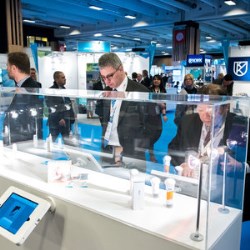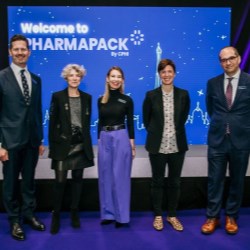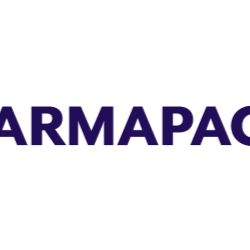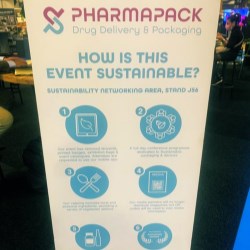Public
PharmaPack Europe Events
PharmaPack Europe Locations
PharmaPack Europe News
Pharmapack Europe Videos
If this is your company, CONTACT US to activate Packbase™ software to build your portal.
Ahead of Pharmapack Europe, Webpackaging spoke with Yasemin Karanis of IQVIA regarding her session “Innovation in Injectables and Devices”. Taking place on October 7th, this session is part of a four-weeklong hybrid event, with extensive content sessions expected to take place until October 8th.
Webpackaging: Can you give me an overview of your session highlights at Pharmapack? Similarly, what do you think is important in the market?
Yasemin: The session, entitled ‘The move towards convenience and trends in injectable drug devices’ will focus on the everchanging pharmaceutical landscape, looking at the industry’s move towards more specialty products and biologic launches and looking at the pressure this creates on healthcare systems as well as the importance of innovative solutions in the drug delivery space.
The session should provide a good overview of key trends in global pharma as well as the additional pressures as a result of the pandemic, with key examples from the industry in the drug delivery space that ultimately benefit patients and address some of these pressures caused by the pandemic
Webpackaging: What do you believe will be the main post-pandemic legacies for the drug delivery devices?
Yasemin: The pandemic has and will continue to have a major impact on the pharmaceutical market worldwide, but we are witnessing the unfolding of three crises all at once. First, we have the pandemic crisis that is drawing funds, which is creating pressure and is leading to payer and patient out of pocket constraints. This is also creating public investment challenges and that delays capital spend on healthcare systems. Another major issue is the disruption of the general economy, the magnitude of the impact brought by this pandemic has been immense, and it’s not certain how long the economic disruption will last due to factors such as new waves and the vaccine rollout. Lastly, we have the healthcare system crisis unfolding and this is mainly driven by the non-covid patient backlog as a result of the major disruption observed. So healthcare systems globally are stretched as a result of managing the pandemic, the patient backlog as well as routine care simultaneously and there is uncertainty and risk going forward as multiple waves of infection mean you can’t really achieve a steady state. The healthcare system is also going through some fundamental changes as both healthcare professionals and patients favor remote healthcare and innovation in drug delivery and formulations will play an important part, so looking ahead we see that self or home administrable launches have a new advantage as they aim to take of pressure on hospitals and healthcare professionals that are already struggling with dealing with this building patient backlog.
Webpackaging: What other advantages will remote monitoring bring?
Yasemin: Remote monitoring of patients will provide a wide range of benefits to various stakeholders. We’ve talked about healthcare systems struggling with resources as well as infusion capacity. Remote monitoring alongside administration forms suitable to be delivered at home or alternative sites, allow us to take patients out of the hospital setting whilst carrying on with their treatments. In a way this is also a more environmentally sustainable solution that eliminated the need for travel and other resources at the hospital end. The promise of remote monitoring also extends into better patient adherence, reducing waste and healthcare expenditure linked to this. It can also benefit in the drug development end, we know that clinical trials have been hit hard by the pandemic and virtual trials with at home administration and remote monitoring could be a way to carry on with research without the need for travel.
Webpackaging: How does that impact the future of the devices? Is it going to be a more patient-centric approach now that there’s going to be an increase in self-administration?
Yasemin: The patient is at the heart of all of this and the goal to ultimately benefit patients alongside HCPs and healthcare systems is a very good way of navigating the complex stakeholder landscape. In line with this trend towards more convenient form of injectable delivery systems, there will be a greater attention given to the design and usability to reduce risks of error in the administration process.
Webpackaging: Do you think self-administration is going to help increase patient adherence and if so how? How are drug delivery device companies going to look at increasing patients adherence?
Yasemin: Patient adherence is quite dependent on patient and their disease. We see that patients are more likely to be adherent if the disease is immediately life threatening or when the treatment helps alleviate pain and provides relief from symptoms. In the context of injectables, patient adherence is a worry in the move towards self-administration as an HCP is not there to monitor. This is when connected devices can be immensely beneficial, they allow for remote monitoring, can guide patients through the injection process, give feedback on whether it was successful or not as well as remind patients of upcoming injections.
Webpackaging: Do you have any thoughts on sustainability, especially in the drug delivery devices industry, as we know you’re moderating a session on this topic at Pharmapack?
Yasemin: The drive for sustainability in drug delivery devices can come in many shapes and sizes, this can be through more efficient processes in manufacturing, requiring fewer parts and using more sustainably sourced materials. They can also be more sustainable by being more recyclable which of course is a challenge as most devices use a mix of materials and polymer types and may be contaminated with biological materials. Devices can also aim to be more sustainable by being derived from more sustainable materials, which also is a challenge as the material would have to be medical grade. Another way in which drug delivery devices can achieve a better environmental profile is through re-usability and through designing longer lived devices. However, when it comes to the overall impact on environmental sustainability, this is much harder to quantify. I think one of the key benefits linking to better sustainability of at home drug delivery systems is that they eliminate the need for travel and the use of other materials to facilitate the administration process such as gloves and other PPE if it had taken place in the hospital.





















